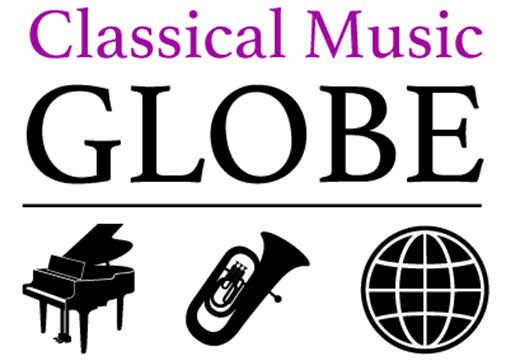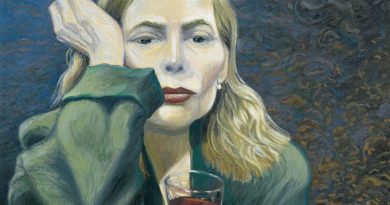ALBUMS: Dave Feels Dizzy
On the excellent Dizzy Atmosphere: Dizzy Gillespie at Zero Gravity, the NYC trumpet great pays respect to the master

Artist: Dave Douglas Album: Dizzy Atmosphere: Dizzy Gillespie at Zero Gravity. Label: Greenleaf ★★★★ (4/5 stars)
When you play the trumpet to make jazz music, there are a lot of legacies to live up to: Miles Davis, Clifford Brown, Lee Morgan, Fats Navarro…and, of course, Dizzy Gillespie.
The co-architect of bebop, the movement that altered the course of jazz’s trajectory more than any other, has likely been the biggest influence on brass horn wielders outside of Davis. Dave Douglas, one of contemporary jazz’s most innovative and prolific trumpeters, clearly felt it was time to grapple with the great man’s impact – thus Dizzy Atmosphere: Dizzy Gillespie at Zero Gravity.
Douglas being Douglas, however, the horn man is not going to take the obvious path. Rather than do an album of Gillespie compositions, or even playing in a bebop style, Douglas instead chooses to explore the ideas embedded in Gillespie’s music – the way the bebopper interpreted harmonic structure, or the inclusiveness of his approach to rhythm. Douglas also evokes Gillespie with his choice of sidepeople – Gillespie often mentored younger musicians, filling his bands with up and coming talent. Douglas does the same here – while his original in-concert performance of these pieces included heavyweights Bill Frisell on guitar, Linda Han Oh on bass, Ambrose Akinmusire on trumpet and Gerald Clayton on piano, the studio recording substitutes Matt Stevens for Frisell, Carmen Rothwell for Oh, Dave Adewumi for Akinmusire and Fabian Almazan for Clayton, retaining jazz drum lord Joey Baron from the original live lineup. The musicians take on Douglas’s music with the taste of professionals and the energy of players with something to prove. They take direction well, and Douglas rewards them with well-earned spotlights of their own.
“Cadillac,” which is inspired by Gillespie’s own “Swing Low Sweet Cadillac,” starts off with atmospheric comping from Stevens and Almazan and interlocked horn lines from Douglas and Adewumi. The latter two play not as duet partners, but as different facets of the same gem, weaving their timbres together to speak with a single voice. Over a train-like rhythm not dissimilar to certain Pat Metheny tunes, the melody unfolds like a flower growing and blooming in fast-motion videography. “See Me Now” washes over the ears like the surf over the shore in the evening, letting Almazan and Stevens evoke a gorgeous twilight as the two horn players add pure tone.

“Subterfuge,” by contrast to its title, comes on brassy and outspoken, letting the trumpets speak brazenly about the melody while Stevens grinds behind them. “Con Almazan,” a deliberate nod to Gillespie’s “Con Alma,” brings a similar nervous energy to Douglas’ complex compositional style, opening up the dense harmonies with airy streams of sound. The nearly ten-minute “Pacific” takes the most liberties with the Dizzy legacy. The deliberately meandering tune lets the trumpeters show off their ballad chops, but they also indulge in much freer playing, encouraged by Baron’s constantly shifting cymbal work and Almazan’s wandering fingers. Stevens contributes his best solo of the record here, combining a biting tone with a lyrical feel that points the way toward a near-future status as a major voice in jazz guitar.
All this is not to say that Douglas and company don’t engage with Gillespie head-on at times. The album contains two Diz tunes, each adapted to Douglas’ style, and not the obvious choices, either. (No “A Night in Tunisia” or “Anthropology” in sight – not even the title track.) “Pickin’ the Cabbage,” a little-covered tune Gillespie contributed to the book of his then-employer Cab Calloway’s big band, pays tribute to Gillespie’s mischievous sense of humor, boiling its brassy swing down to smaller combo jazz without sounding like anything’s been dumbed down or left out. Rothwell and Baron really shine here, perfectly in sync with the tune’s playful tone, with Almazan taking a spectacular solo. “Manteca” comes closest to Gillespie’s original ethos, with a subtle Afro-Cuban rhythm underlying Douglas and Adewumi’s unabashed bebop riffery and hard bop unison lines – though even it sounds more like Douglas’ vision than Gillespie’s. On these tunes, as on the album itself, Douglas takes inspiration from Gillespie’s spirit, rather than his craft. The leader knows better than to try to beat the titan at his own game.




